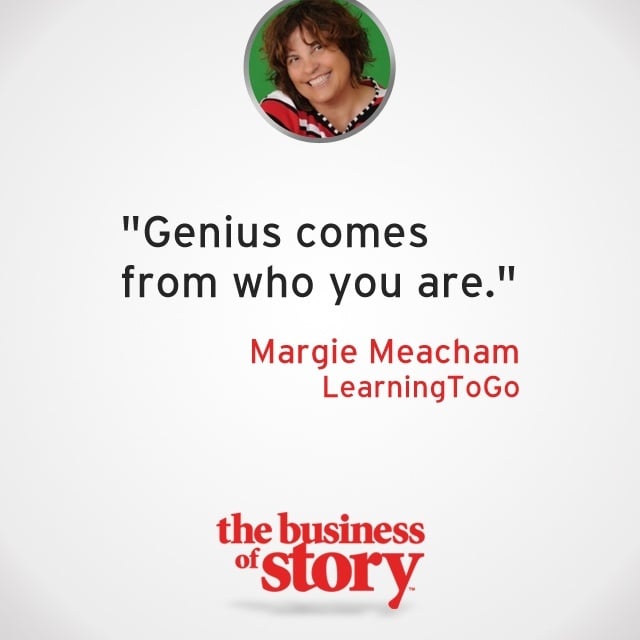
Feed Your Brain Story
Margie Meacham teaches multinational corporations how to apply neuroscience to their learning processes to better connect with employees and customers.
She turns teachers and business leaders alike into learning experts so that they can be more empowering in their fields, creating knowledgeable, enlightened, and enthusiastic leaders.
But how does this intersect with impactful storytelling? As Margie has discovered through studying the neuroscience of story, “the remarkable thing is that when someone’s listening to a story, their brain reacts in the same places it would if they were actually living out those same events.”
By applying this to business practices, Margie has created a curriculum to harness the cerebral, evolutionary power of storytelling and apply this to learning, teaching, and business.
She joins the Business of Story Podcast to share how to harness this true, innate genius.
In This Episode
- How to use the power of teaching to advance business missions further, faster
- Why pictures are truly worth a thousand words
- Why emotion is so essential to the learning process
- How stories are the only true vehicle we should use to move people to action
- The origin of the term “genius”
- Chunking information
Quotes From This Episode
“You can teach people how to be better leaders or salespeople by walking them through a story. They don’t have to wait to have years of experience accumulate to learn those skills.” —@margiemeacham
“For someone who is running a business, or leading a team, or aspiring to achieve a great goal, if you can understand how your brain works, now you understand how everybody’s brain works, and now maybe you organize your communications a little differently.” —@margiemeacham
“As managers, we’re often told to leave emotions at the door, and that’s absolutely wrong. Your brain needs emotions in order to learn, and all learning has a component that is emotional. That’s why stories are so powerful, because they bring out emotions.” —@margiemeacham
“If we give millennials these lame PowerPoints, with data instead of story, they tune out. And it says something to them about the whole organization, that you would dare to put that in front of them. You lose credibility with them. It’s going to be harder to engage those employees because of that.” —@margiemeacham
“The good news is that when you are learning or hearing a story, you get a little rush of chemicals that make you feel good. It’s the same chemicals that fire when you eat chocolate or have an orgasm.” —@margiemeacham
Resources
- Brain Matters Academy
- LearningToGo.info
- Margie’s blog
- “Brain Matters: How to help anyone learn anything using neuroscience,” by Margie Meacham
- “Why is Storytelling Biologically Important for Survival?” with Dr. Paul Zak
- Dr. Paul Zak’s TED Talk, “Trust, morality — and oxytocin?“
- “Storynomics: How to Create a Story That Inspires” with Robert McKee
- “Start With Why,” by Simon Sinek
- “Blink,” by Malcolm Gladwell
- yourstory.businessofstory.com
- BusinessofStory.com













